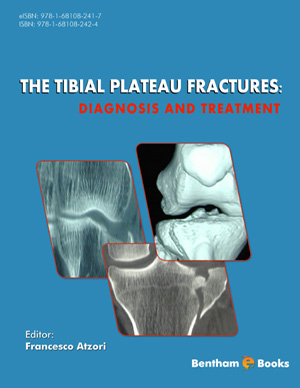Abstract
Total Knee Arthroplasties (TKAs) in tibial plateau fractures can be performed in the acute or chronic settings. Treatment of tibial plateau fractures with Open reduction and Internal Fixation (ORIF) in elderly patients can lead to poor results because of poor bone quality, fracture complexity and higher risk of complications. For these reasons primary TKA in the acute setting can be an option in elderly patients. Most of the authors agree in confirming that this is a safe treatment with good clinical outcomes, but inferior compared to whom obtained in elective TKAs, with a higher risk of complications, similar to those reported in revision TKAs. On the other hand ORIF is the gold standard treatment in tibial plateau fractures in younger patients, but the incidence of post-traumatic arthritis is high, with the need of TKA conversion. There are few reports on literature on TKAs performed after tibial plateau fractures, but there is agreement in affirming that clinical outcomes and implant survival in those cases are lower than in TKA performed for primary arthritis. In this chapter we will analyze the indication for primary TKR in tibial plateau fractures, both in acute and chronic setting, with a literature review on the clinical outcomes.
Keywords: Arthritis, Arthroplasty, Elderly, Fracture, Knee, Post-traumatic, Tibial plateau.






















